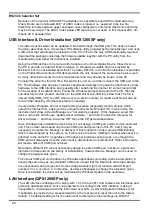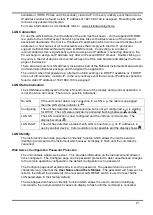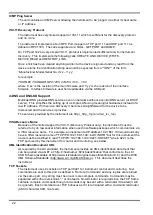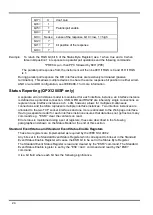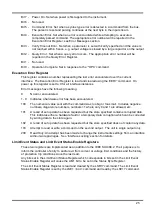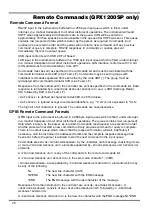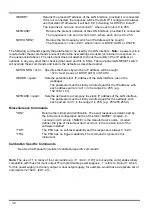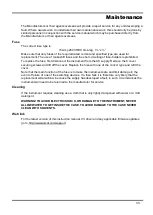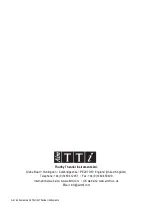
32
IPADDR?
Returns the present IP address of the LAN interface, provided it is connected.
If it is not connected, the response will be the static IP if configured to always
use that static IP, otherwise it will be 0.0.0.0 if waiting for DHCP or Auto-IP.
The response is nnn.nnn.nnn.nnn<
RMT
>, where each nnn is 0 to 255.
NETMASK?
Returns the present netmask of the LAN interface, provided it is connected.
The response is nnn.nnn.nnn.nnn<
RMT
>, where each nnn is 0 to 255.
NETCONFIG?
Returns the first means by which an IP address will be sought.
The response is <
CRD
><
RMT
> where <
CRD
> is DHCP, AUTO or STATIC.
The following commands specify the parameters to be used by the LAN interface.
Note:
a power cycle is
required after these commands are sent before the new settings are used (or returned in response to
the queries listed above). The instrument does not attempt to check the validity of the IP address or
netmask in any way other than checking that each part fits in 8 bits. The rear panel LAN RESET switch
will override these commands and restore the defaults as described earlier.
NETCONFIG <
CPD
> Specifies the means by which an IP address will be sought.
<
CPD
> must be one of DHCP, AUTO or STATIC.
IPADDR <quad>
Sets the potential static IP address of the LAN interface (as on the
webpage).
The parameter must be strictly a dotted quad for the IP address, with
each address part an <
NR
1> in the range 0 to 255, (e.g.
192.168.1.101).
NETMASK <quad>
Sets the netmask to accompany the static IP address of the LAN interface.
The parameter must be strictly a dotted quad for the netmask, with
each part an <
NR
1> in the range 0 to 255, (e.g. 255.255.255.0).
Miscellaneous Commands
*IDN?
Returns the instrument identification. The exact response is determined by
the instrument configuration and is of the form <NAME>,<model>, 0,
<version><
RMT
> where <NAME> is the manufacturer's name, <model>
defines the type of instrument and <version> is the revision level of the
software installed.
*TST?
The PSU has no self-test capability and the response is always 0 <
RMT
>.
*TRG
The PSU has no trigger capability. The command is ignored in this
instrument.
Calibration Specific Commands
See Service Manual for details of calibration specific commands.
Note:
The use of ‘1’ in many of the commands (e.g. V1 <
NRF
>, I1O?) is to keep the commands entirely
compatible with those for multi-output TTi programmable power supplies. ‘1’ refers to ‘Output 1’ which,
for this power supply, is the only output; a dual output supply, for example, would have a duplicate set of
commands V2 <
NRF
>, I2O?, etc.



